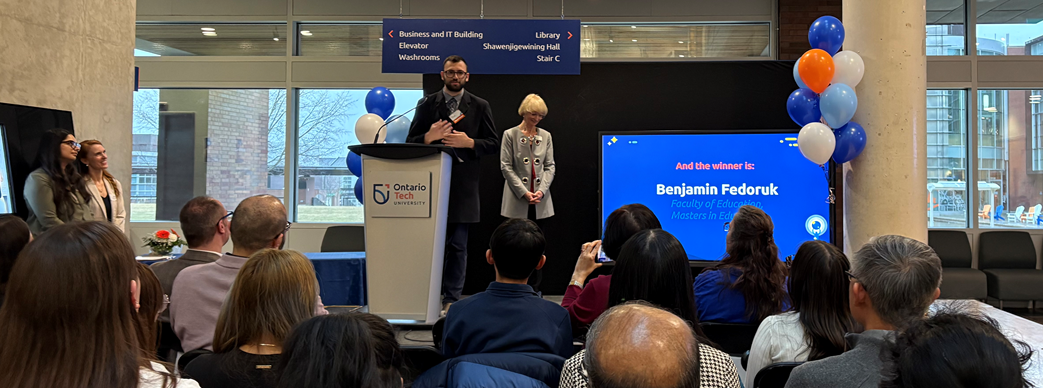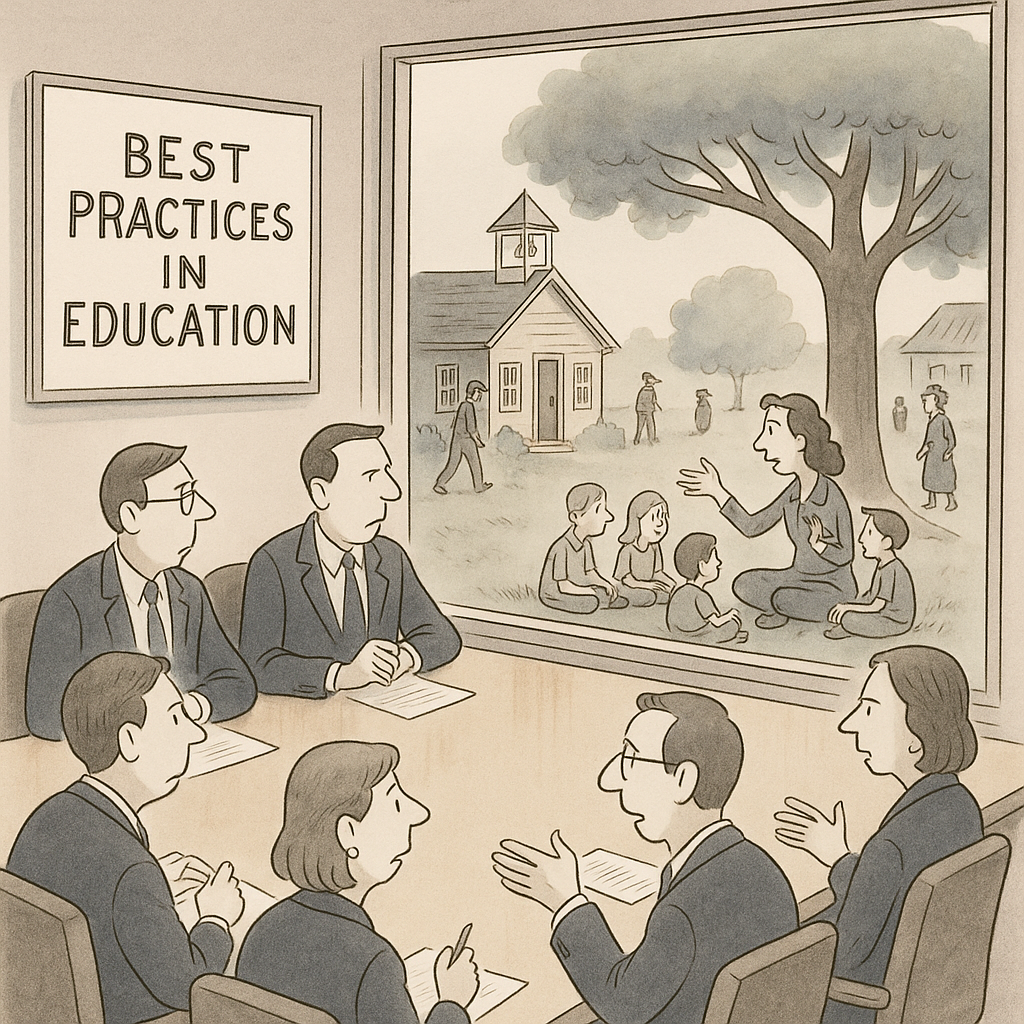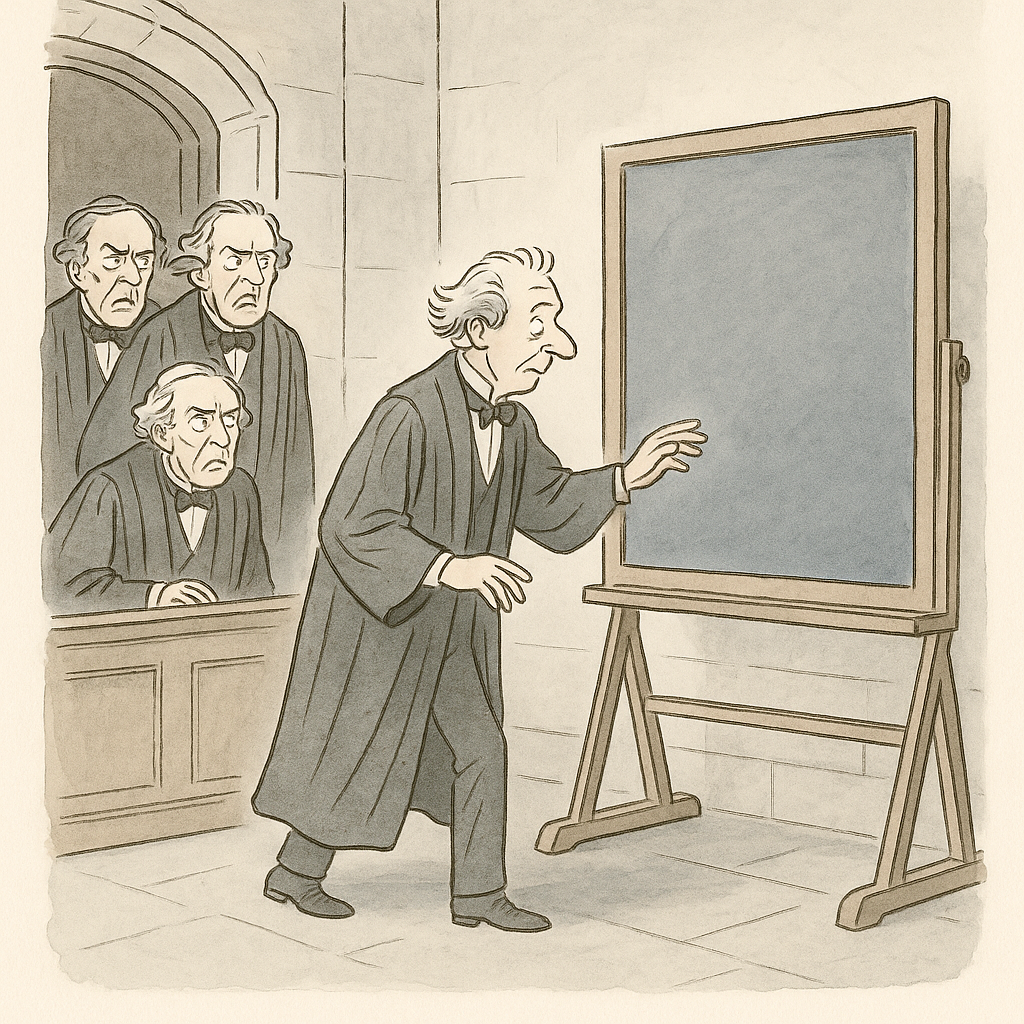Math Among Friends: My Teaching Philosophy
When I first encountered modern algebra, I was hit by a wall of definitions, theorems, proofs, and symbols. This is typical of all pure mathematical subjects. My teaching philosophy, in this context, centres on making this fortress accessible without compromising its structural integrity. That is, mathematics should first be shared among friends, with rigour available but not overwhelming.
I'll demonstrate this with a challenging theorem for the first-time group theory student -- the First Isomorphism Theorem. Here's the traditional explanation of the theorem:
The Formal Approach
Theorem. Let φ:G⥲H be an isomorphism of groups. Then G/ker(φ)≃φ(G) by the isomorphism ψ:G/ker(φ)⥲φ(G), ψ:g·ker(φ)↦φ(g).
Clear as mud, right? If you're confused, so was I when I first read this. Mathematical research often prioritizes terseness, as most mathematicians are able to interpret and understand the symbols. This provides mathematics with the required level of rigour.
However, there must be a better way to teach mathematics to outsiders. This is where my "among friends" approach comes in. When we teach mathematics among friends, we treat the subject with less strictness and a sense of informality. We attempt to convey ideas first, and formality second. Here's how I would explain the First Isomorphism Theorem among friends:
The Among Friends Approach
Here's how I'd explain it to a friend over coffee:
"When we're mapping one group to another, we're essentially trying to preserve the structure while possibly collapsing some elements together. The kernel tells us exactly what's getting collapsed -- it's all the things being mapped to the identity. What's interesting is, if we treat everything that gets collapsed as equivalent -- that is, if we mod out by the kernel -- we get a perfect match with where we're mapping to. You can think of the kernel like the 'noise' in our mapping, and once we factor it out, what's left is a perfect correspondence."
The formal statement of the First Isomorphism Theorem would be provided as a collapsed footnote. This allows a student's curiosity to drive him to explore the formality further.
Building Mathematical Maturity
This approach reflects a deeper understanding of how mathematical thinking develops. When we teach "among friends", we're not just making mathematics easier -- we're modelling how mathematicians actually think about these concepts. Even experienced mathematicians start with concrete examples and gradually build abstraction.
This approach has backing by research. Tall & Vinner (1981) discuss the benefits of teaching the concept image prior to the concept definition. In the example of the First Isomorphism Theorem, the "among friends" explanation constitutes the concept image, which leads students to the footnotes, constituting the concept definition. Gravemeijer (1994) introduces "progressive mathematization", where students move from informal to formal mathematical reasoning. Also, Oudeyer et al. (2016), using a neuroscientific lens, found that curiosity has a notable impact on learner engagement. The "among friends" approach exemplifies the progressive mathematization while being driven toward formality by curiosity.
The interplay between informal understanding and formal rigour is critical. Each enhances the other: informal understanding guides our formal proofs, formal proofs help us correct our intuition. The dialogue between the two leads to deep mathematical insights. Moving from informal to formal mathematical understanding isn't just a teaching preference -- it's a pedagogically sound approach supported by both educational research and our understanding of how the brain processes complex information. As learners develop mathematical maturity, they don't abandon their informal understanding; rather, they build on it. This "among friends" approach reflects not only how we learn mathematics, but how we actually do mathematics at every level.
Theoretical Foundations: From Vygotsky to Modern Cognitive Science
The "among friends" approach to mathematics isn't just appealing to the intuition -- it's deeply grounded in fundamental learning theories. Here's how these theoretical frameworks support and explain why this method works:
The Zone of Proximal Development and Scaffolding
Vygotsky's concept of the Zone of Proximal Development (ZPD) encapsulates what happens in mathematics among friends. The informal explanation serves as what Vygotsky terms the more knowledgeable other (MKO), bridging the gap between what a learner can do independently and what they can achieve with guidance (Orey, 2019). Our informal explanations of abstract concepts allow students to reach beyond their current understanding while remaining connected to familiar ground. As Eun (2019) emphasizes, this makes the ZPD not just a teaching technique but an overarching concept that integrates cognitive, social and developmental aspects of learning. Beyond just cognitive scaffolding, the ZPD represents a space where mathematical identity and understanding are formed through dialogue and social interaction.
The progression from informal to formal understanding fostered by teaching among friends represents scaffolding in its purest form. When building an understanding of advanced concepts, the learner first explores the concepts informally, providing an accessible entry point. Footnotes then offer deeper formal details when the learner is ready. Progressive formalization allows the gradual removal of scaffolds. Eventually, learners will operate independently at the formal level.
Cognitive Load Theory: A Critical Lens
Recent critical analyses of cognitive load theory (de Jong, 2010) help explain why the "among friends" approach is effective. While cognitive load theory (CLT) emphasizes working memory limitations, de Jong (2010) points out that in authentic learning situations these limitations may be less critical than laboratory studies suggest. Learners naturally manage cognitive load by implementing various strategies, from the use of external memory aids to controlling their own pace. These strategies are often restricted in cognitive load research.
De Jong (2020) also observes that the distinctions between different types of load (intrinsic, extraneous and germane) are often unclear and context-dependent. Furthermore, loads types don't simply add together as CLT suggests, but interact in complex ways.
The among friends approach embraces these realities by:
- Allowing natural load management through informal exploration.
- Providing formal details through footnotes when the learner is ready.
- Supporting individual pathways to understanding.
Healing Math Trauma with the "Among Friends" Approach in the Adult Learner
The "among friends" approach to mathematics aligns naturally with the work of Knowles (1978) on andragogy. While traditional pedagogy treats learners as dependent recipients of knowledge, andragogy recognizes learners as self-directed individuals who bring valuable experience to the learning process (Loeng, 2020). This perspective transforms how we approach mathematics education in higher education where past experiences with mathematics can significantly impact outcomes.
Understanding Mathematical Trauma
Mathematics educators use the phrase "math trauma" to describe emotions arising when students are learning traditionally difficult mathematics concepts, or when asked about previous experiences with mathematics (Ruef, 2018). Gunter & Gunter (2023) found that math trauma meets some clinical definitions of trauma. When students internalize the "not a math person" identity, this often sticks with them psychologically. This leads to a persistent resistance to engage with mathematical thinking.
Healing Through the "Among Friends" Approach
The "among friends" approach, emphasizing on informality first, directly addresses these deep-seated issues by fostering an environment where healing can occur alongside learning. By establishing a non-judgmental learning space, the immediate pressure of formal precision can be removed, which may reduce anxiety. The approach validates informal understanding and intuition, providing multiple entry points to concepts that might feel otherwise inaccessible.
The process of rebuilding mathematical identity demands careful attention to the learner's past experiences. With continued practice, students will begin to experience positive experiences with mathematical thinking. Every small victory helps to construct a new relationship with mathematics, which acknowledges past difficulties while fostering future growth.
Supporting learner agency plays a crucial role in this process. When adult learners are able to control their pace of formalization, they regain power over their mathematical learning journey. This autonomy helps rebuild trust in their mathematical intuition. It also creates space for successful problem-solving experiences which challenge their negative self-concept.
Breaking the Cycle
Critically, the "among friends" approach helps break the intergenerational cycle of mathematical trauma. Vanbinst et al. (2020) found that adult learners risk transmitting their mathematical trauma to the next generation if left unaddressed. The active reconstruction of one's mathematical identity involves building new, positive associations with mathematical thinking. Through the "among friends" methodology, learners develop a growth mindset about mathematical ability. This transformation doesn't happen in isolation -- the "among friends" environment naturally fosters peer support networks where experiences and strategies can be shared. The commitment to an informal-first approach, supported by andragogical principles, creates a pathway for adults to reclaim their mathematical confidence.
A Footnote on Footnotes
Building on the exploration of the "among friends" approach, let's examine a critical element of this teaching philosophy: the strategic use of footnotes. This approach isn't just about making mathematics more accessible; it's about creating multiple pathways to understanding that serve diverse learning needs. The power of footnotes lies in their ability to create what Tomlinson et al. (2003) call multiple access points.
When teaching mathematics, we're not just teaching to a single audience. In any classroom, there are students who grasp abstract concepts intuitively, others who need concrete examples first, and others still who fall somewhere in between. The footnote approach addresses this diversity by providing two parallel paths to understanding. By using dual layers, not only is content differentiated, but a natural progression from intuition to rigour is created.
Choice as a Catalyst for Growth
Each time a student decides whether to delve into a footnote, they are engaging in metacognitive monitoring. This mirrors what occurs in actual mathematics. Professional mathematicians constantly navigate between intuitive and formal understandings, choosing the level of rigour required for their current needs. By making this navigation explicit through the footnote structure, students are directed into authentic mathematical thinking.
The "among friends" approach, enhanced with formal footnotes, creates natural decision points throughout the learning process. These choices serve multiple functions:
- They require students to assess their current understanding.
- They encourage ownership of the learning process.
- They develop judgment about when formality is needed.
- They build confidence in mathematical decision-making.
This approach particularly benefits students recovering from math trauma. Instead of being forced into formality before they're ready, students can building confidence through successful navigation of these choices.
Differentiation Through Self-Regulation
Traditional differentiated instruction often relies on teacher assessment of student readiness (Tomlinson, 2003). The footnote approach shifts this responsibility to the learner, promoting self-regulated learning while maintaining teacher guidance (Chamberlin & Powers, 2010). This shift honors the adult learner's need for autonomy, priming them for independent mathematical thinking. When students learn to regular their engagement with formal mathematics, they're developing skills that extend far beyond any single topic; they're learning how to learn mathematics.
References
Chamberlin, M., & Powers, R. (2010). The promise of differentiated instruction for enhancing the mathematical understandings of college students. Teaching Mathematics and its Applications: An International Journal of the IMA, 29(3), 113-139. https://doi.org/10.1093/teamat/hrq006
de Jong, T. (2010). Cognitive load theory, educational research, and instructional design: Some food for thought. Instructional Science, 38(2), 105-134. https://doi.org/10.1007/s11251-009-9110-0
Eun, B. (2019). The zone of proximal development as an overarching concept: A framework for synthesizing Vygotsky's theories. Educational Philosophy and Theory, 51(1), 18-30. https://doi.org/10.1080/00131857.2017.1421941
Gravemeijer, K. P. E. (1994). CD-B series on research and mathematics education: Vol. 14. Developing realistic mathematics education. CD-Beta-Press.
Gunter, M., & Gunter, D. (2023, October 19-21). Connecting experiences in mathematics and math trauma [Paper presentation]. 122nd Annual Convention of the School Science and Mathematics Association, Colorado Springs, CO, United States.
Knowles, M. S. (1978). Andragogy: Adult learning theory in perspective. Community College Review, 5(3), 9-20. https://doi.org/10.1177/009155217800500302
Loeng, S. (2020). Self-directed learning: A core concept in adult education. Education Research International, 2020, Article 3816132. https://doi.org/10.1155/2020/3816132
Orey, M. (2010). Emerging perspectives on learning, teaching and technology. North Charleston: CreateSpace.
Oudeyer, P.-Y., Gottlieb, J., & Lopes, M. (2016). Intrinsic motivation, curiosity, and learning: Theory and applications in educational technologies. Progress in Brain Research, 229, 257-284. https://doi.org/10.1016/bs.pbr.2016.05.005
Ruef, J. (2018, November 1). Think you're bad at math? You may suffer from 'math trauma'. The Conversation. https://theconversation.com/think-youre-bad-at-math-you-may-suffer-from-math-trauma-104209
Tall, D., & Vinner, S. (1981). Concept image and concept definition in mathematics with particular reference to limits and continuity. Educational Studies in Mathematics, 12, 151-169. https://doi.org/10.1007/BF00305619
Tomlinson, C. A., Brighton, C., Hertberg, H., Callahan, C. M., Moon, T.R., Brimijoin, K., Conover, L. A., & Reynolds, T. (2003). Differentiating instruction in response to student readiness, interest, and learning: Profile in academically diverse classrooms: A literature review. Journal for the Education of the Gifted, 27(2-3), 119-145. https://doi.org/10.1177/016235320302700203
Vanbinst, K., Bellon, E., & Dowker, A. (2020). Mathematics anxiety: An intergenerational approach. Frontiers in Psychology, 10, Article 1648. https://doi.org/10.3389/fpsyg.2020.01648




